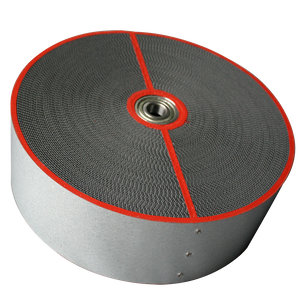What is electronic commutation EC motor?
Views: 143 Author: Site Editor Publish Time: 2022-02-24 Origin: Site
Electrical Commutation motors adopt alternating current (AC) as the power source. It is a brushless DC motor with permanent magnets and on-board electronics. This article will explain why the EC motor will revolutionize the air ventilation industry in terms of its structural features and advantages.
Advantages
EC desiccant rotor motor has the characteristics of high efficiency, easy control and a long lifespan.
Given its advantages, sensors that generate 0-10 V, PWM or 4-20 mA signals can be connected directly to most EC motors. This allows the EC motor to control its speed without the need for complex variable frequency drives (VFDs), making it work in high energy efficiency.
Because EC motor's magnetic field is generated and commutation is achieved both electronically, precise motor detection and control become possible.
The high efficiency and less mechanical wear and tear give EC motors the advantage of a long life expectancy.
Features
Simplified Structure
EC desiccant rotor motor eliminates the collector ring and excitation brush, with air gap magnetic density greatly improving. The motor is optimized in size and weight.
Easy to Control
EC motor uses high-performance permanent magnet material, so the torque constant, torque inertia ratio and power density of the motor have been improved. Secondly, the modern permanent magnet circuit design is relatively complete, and the coercivity of permanent magnet motor material is high. So its resistance to armature reaction and demagnetization is greatly enhanced.
Therefore the control parameters of the motor are not susceptible to external disturbances.
The structure of the EC motor and the materials used both make it easier to control
Difference between AC motor, DC motor and EC motor
All electric motors have the same function of converting electrical energy into mechanical energy. But they do it in various ways. This difference depends mainly on the energy source provided to the motor.
AC motors run on alternating current (AC). Since the line frequency of an AC motor is fixed, it has speed limits. Changing the frequency of the AC supply requires a variable frequency drive (VFD), which is very bulky and expensive.
DC motors use direct current, they need carbon brushes and a commutator ring to switch the current direction. Wear and tear on these mechanical parts cause a lot of operating noise and a reduction on service life.
EC motor uses permanent magnets and electrical windings to generate the magnetic field. But the way it uses to switch the direction of current is different from that of DC motor. EC motor has on-board electronics that include a rectifier that converts AC power to DC.
Because EC motors do not need a VFD to change speed or use the mechanical parts to switch current direction, EC motors have no speed limits and no mechanical wear and tear issues. It is more efficient and has a longer service life.







